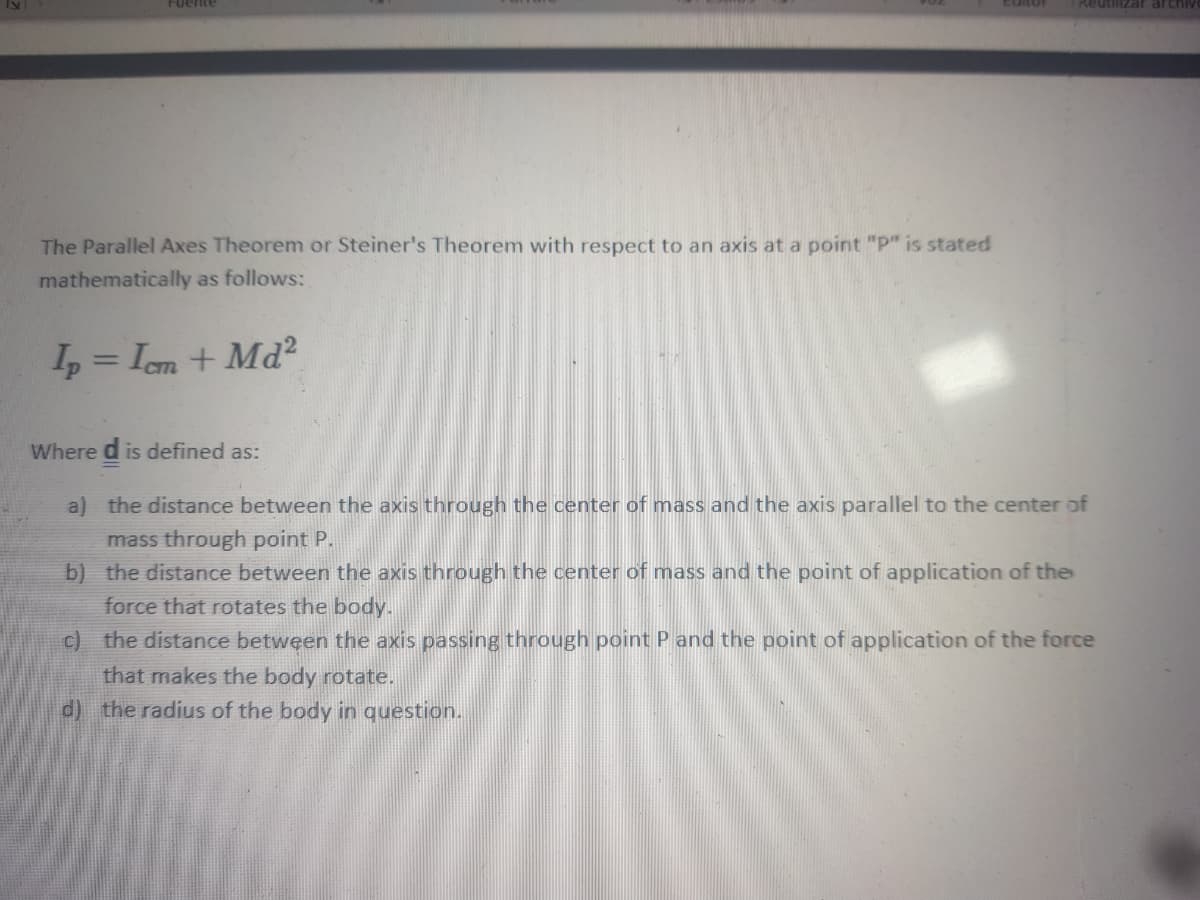The Parallel Axes Theorem or Steiner's Theorem with respect to an axis at a point "P" is stated mathematically as follows: = Iem + Md? Where d is defined as: a) the distance between the axis through the center of mass and the axis parallel to the center of mass through point P. b) the distance between the axis through the center of mass and the point of application of the force that rotates the body. c) the distance between the axis passing through point P and the point of application of the force that makes the body rotate. d) the radius of the body in question.
The Parallel Axes Theorem or Steiner's Theorem with respect to an axis at a point "P" is stated mathematically as follows: = Iem + Md? Where d is defined as: a) the distance between the axis through the center of mass and the axis parallel to the center of mass through point P. b) the distance between the axis through the center of mass and the point of application of the force that rotates the body. c) the distance between the axis passing through point P and the point of application of the force that makes the body rotate. d) the radius of the body in question.
Physics for Scientists and Engineers: Foundations and Connections
1st Edition
ISBN:9781133939146
Author:Katz, Debora M.
Publisher:Katz, Debora M.
Chapter10: Systems Of Particles And Conservation Of Momentum
Section: Chapter Questions
Problem 18PQ: Two metersticks are connected at their ends as shown in Figure P10.18. The center of mass of each...
Related questions
Question
100%

Transcribed Image Text:Fuente
Reutilizar archiv
The Parallel Axes Theorem or Steiner's Theorem with respect to an axis at a point "P" is stated
mathematically as follows:
I = Iem + Md?
Where d is defined as:
a) the distance between the axis through the center of mass and the axis parallel to the center of
mass through point P.
b) the distance between the axis through the center of mass and the point of application of the
force that rotates the body.
c) the distance between the axis passing through point P and the point of application of the force
that makes the body rotate.
d) the radius of the body in question.
Expert Solution
This question has been solved!
Explore an expertly crafted, step-by-step solution for a thorough understanding of key concepts.
This is a popular solution!
Trending now
This is a popular solution!
Step by step
Solved in 4 steps with 7 images

Knowledge Booster
Learn more about
Need a deep-dive on the concept behind this application? Look no further. Learn more about this topic, physics and related others by exploring similar questions and additional content below.Recommended textbooks for you

Physics for Scientists and Engineers: Foundations…
Physics
ISBN:
9781133939146
Author:
Katz, Debora M.
Publisher:
Cengage Learning

Physics for Scientists and Engineers: Foundations…
Physics
ISBN:
9781133939146
Author:
Katz, Debora M.
Publisher:
Cengage Learning